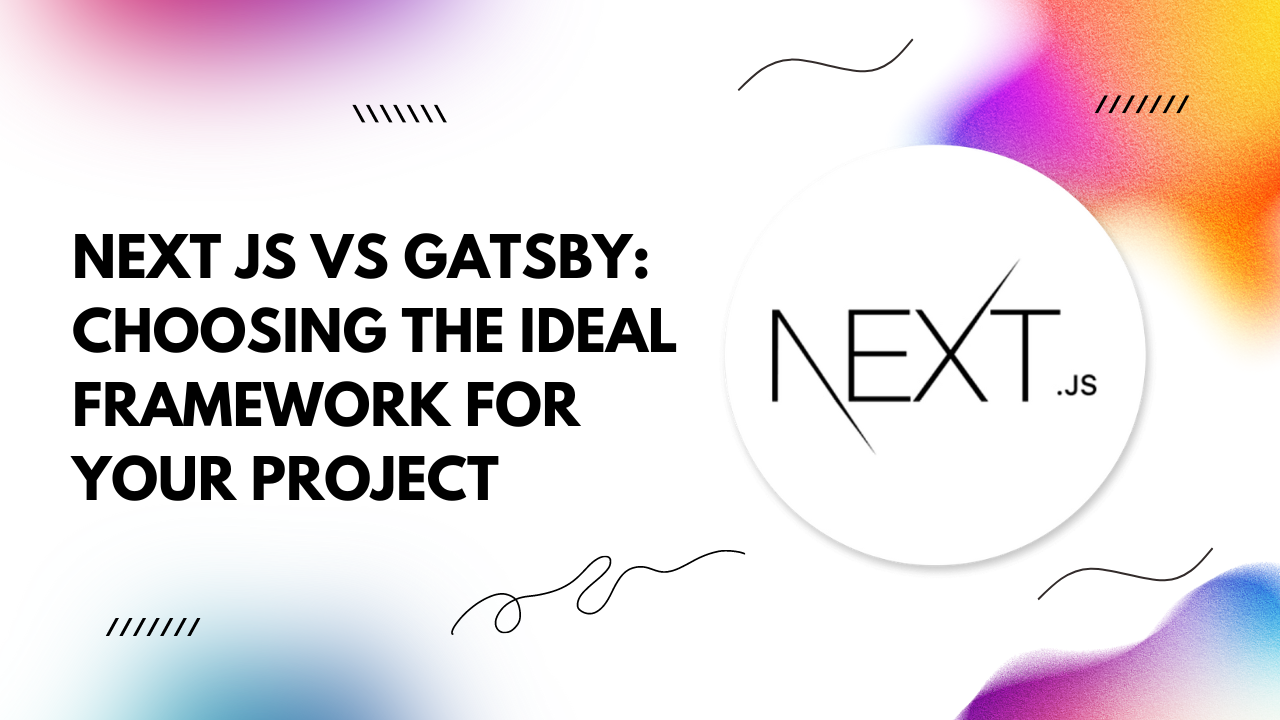Let's delve into a comparative analysis to help you make an informed decision.
Understanding Next.js and Gatsby
Next.js: Built on top of React.js, Next.js offers server-side rendering (SSR), static site generation (SSG), and client-side rendering (CSR) capabilities out of the box. It simplifies the creation of React applications with its intuitive routing system and API routes.Gatsby: Unlike Next.js, Gatsby is a static site generator that uses GraphQL to pull data from multiple sources. It excels in building blazing-fast websites by pre-rendering pages at build time. Gatsby's rich plugin ecosystem allows seamless integration with various data sources and services.
Choosing Based on Project Requirements
1. Static vs. Dynamic Content: Choose Gatsby if your project primarily involves static content with occasional updates. It excels in generating fast-loading static sites, ideal for blogs, portfolios, and marketing websites. Opt for Next.js if your application requires dynamic content rendering or real-time data fetching. Its SSR and CSR capabilities make it suitable for dynamic web applications, e-commerce platforms, and content-rich sites.2. Performance and Scalability: Gatsby's pre-built pages ensure lightning-fast load times, making it a preferred choice for performance-critical projects. Its optimized bundling and image processing enhance scalability, handling large volumes of traffic with ease. Next.js offers flexibility in balancing performance and scalability. With SSR for initial rendering and CSR for subsequent interactions, it provides a smooth user experience while scaling effortlessly to accommodate growing user bases.
3. Development Speed and Complexity: Gatsby's convention-over-configuration approach simplifies development by offering predefined structures and workflows. Developers can leverage its extensive plugin ecosystem to streamline common tasks and focus on building features. Next.js provides more flexibility and control over the development process. While this allows for custom solutions tailored to specific project requirements, it may require more initial setup and configuration compared to Gatsby.
Code Examples
1. Gatsby Example:
import React from 'react'
import { graphql } from 'gatsby'
const BlogPost = ({ data }) => {
const post = data.markdownRemark
return (
<div>
<h1>{post.frontmatter.title}</h1>
<div dangerouslySetInnerHTML={{ __html: post.html }} />
</div>
)
}
export const query = graphql`
query ($slug: String!) {
markdownRemark(fields: { slug: { eq: $slug } }) {
html
frontmatter {
title
}
}
}
`
export default BlogPost
import React from 'react'
import { useRouter } from 'next/router'
const BlogPost = ({ post }) => {
const router = useRouter()
return (
<div>
<h1>{post.title}</h1>
<p>{post.content}</p>
</div>
)
}
export async function getServerSideProps({ params }) {
const res = await fetch(`https://api.example.com/posts/${params.slug}`)
const post = await res.json()
return {
props: {
post,
},
}
}
export default BlogPost
